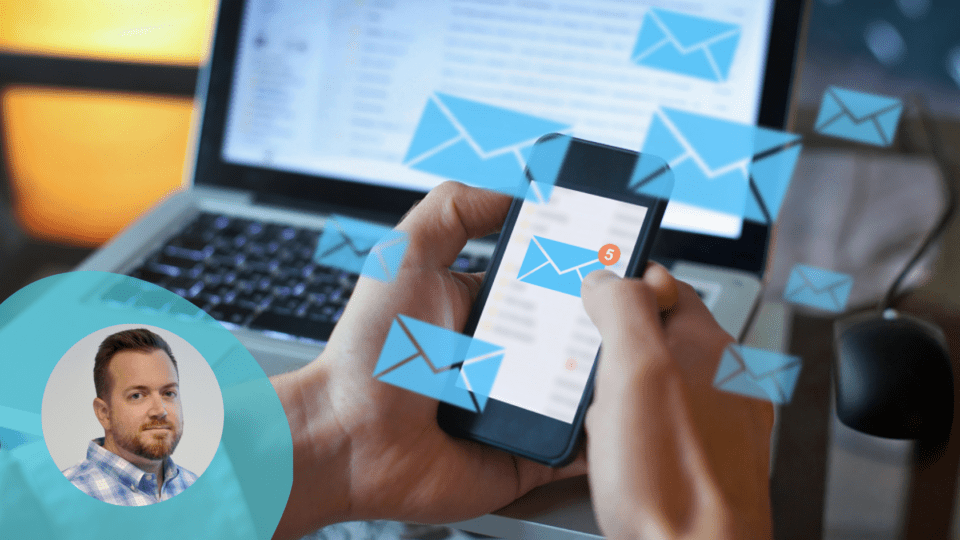Building and sustaining deep customer loyalty is a big task that very often comes down to the little things.
Too many brands skip over those seemingly small details — and if you get them right, it’s a chance to build a competitive advantage. Personalized email is a great example. It might not be the first thing that comes to mind when marketers think about customer loyalty, but maybe it should be.
With the right data and the right technologies in place, a personalized email is a “little” thing that can build lots of goodwill — and repeat business — over time. Here are three ways brand marketers can leverage their troves of data and email personalization to turn ordinary customers into loyal fans.
1. Give them a compelling summary of how they use your product or service.
This is a great way to develop a fun, personalized connection with customers — send them a great “year in review” or similar summary of how they’ve used your product or service.
Spotify has an excellent example of this tactic at work. Its Spotify Wrapped feature gives the streaming music platform’s listeners a year-end summary of their favorite artists, songs and other data. It has become wildly popular and something people look forward to. Better yet, they share it widely on platforms like TikTok, Facebook and other social media.
You don’t have to be in the streaming business to do something similar — fashion/clothing, travel, food and beverage and most other consumer-oriented brands can do something similar. When you have good data, you can use it to highlight the most compelling points for individual customers.
Email personalization is a cornerstone of this type of campaign. It’s a great regular reminder in customers’ inboxes of what they get by using your product or service. And the email is personal to them and them alone — it’s not the generic “Thank you for your business” message; it speaks directly to their habits and preferences. The social sharing links embedded in the email kickstart a cascading effect. When people start sharing with friends and followers, it makes those people want their own version.
Annual or year-end summaries are common but, depending on your brand and business, any sensible interval — monthly, quarterly, seasonal, even weekly for certain kinds of apps and services — can work. Just don’t overdo it and dilute the impact.
2. Make recommendations based on what you know about them.
If you’re a big brand, your customers are regularly giving you information about themselves — what they like, what they don’t like and all sorts of other data. There’s behavior data flowing into your database all of the time. Use it to send them tailored recommendations that seem hand-picked for them as an individual.
This can be both first-party data (the information customers give you indirectly based on their behavior, such as website visits and purchase history) and zero-party data (the information customers give you directly when you ask for it, such as in an account profile, survey or other source). You should have plenty of both, so use it to make informed and personalized recommendations to people about other products or services they might enjoy.
Amazon is a classic example, but many ecommerce brands do this too: What you see when you hit their homepage is based on what they already know about you. And you can take this type of personalization and proactively send it out to customers via email (which you have direct control over as well.) OpenTable’s restaurant recommendation and LinkedIn’s job search recommendation emails are also good examples.
While there can be some downsides or gotchas — especially if your data and/or recommendation engine isn’t great — people usually appreciate this approach because it recognizes them as a return customer or visitor. A personalized recommendation email “sees” them — rather than treating them as one of a million other possible people. That breeds long-term brand loyalty and repeat business.
Another bonus: These types of personalized recommendation emails should continuously get better with time, since you (and your marketing tools) are always adding new data and learning from it. As the quality of your recommendations gets better, you generate greater loyalty — since people tend to understand they’re getting better suggestions and service as a result of their continued engagement with you. This is a type of personalization that many brands do, but not nearly as many do well, so it’s an opportunity to stand out.
3. Segment your loyal customers into their own email audience.
One of the best ways to build loyalty is also the most straightforward: Let people know you recognize their loyalty! This is, of course, something that most marketers already know — the vast ecosystem of loyalty rewards programs speaks to this.
But this gets overlooked, especially in email marketing: Don’t send your most loyal customers the same emails you send everyone else out there (except when it’s truly an “everyone” kind of message.)
Fashion brands often do a good job of this — either giving loyal customers first crack at a new product release or access to a sale that’s not open to the general public.
By identifying and segmenting your customers based on your own internal loyalty metrics and other data, you can send them emails that recognize that long-term relationship. Send them content and offers that you don’t send to everyone else — presales, special discounts, early looks at new products, invite-only events, you name it. In virtually any consumer business, you can find those “extras” for your best customers and send them via emails tailored specifically for those segments.
It’s another “little thing” that’s actually a very big deal — and customers will reward you for getting it right.
Will Devlin is the VP of Marketing at MessageGears. He has over two decades of experience in SaaS marketing, ecommerce and customer service.




